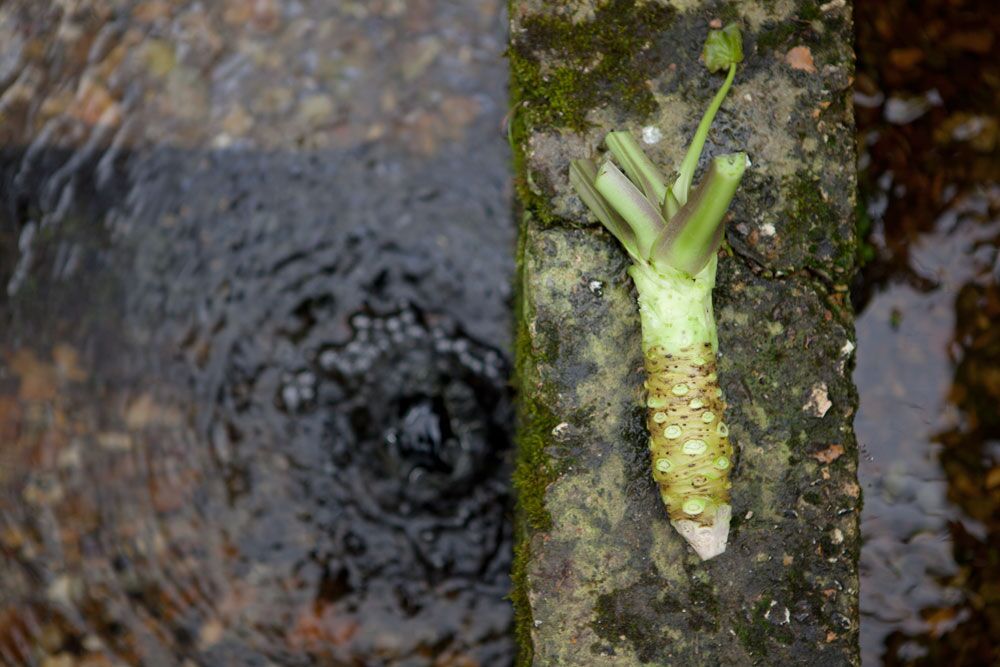With the first UK commercial crop of chickpeas recently harvested, it’s easy to conclude that climate change is altering the types of crops we grow in the UK.
The Met Office has warned that if emissions continue to increase, the country will experience more intense hot days as well as more heavy rainfall.
This seemingly doesn’t bode well for British agriculture, which has a long association with root vegetables and hardy greens. On the other hand, are the exotic-sounding crops, such as chickpeas, chia, quinoa, wasabi and saffron, which have made recent headlines for being successfully grown in the UK, a symptom of global climate change?
The situation is more nuanced than this and not all of these crops are new to the UK or, in fact, benefit from climate change.
Take saffron. It was first brought here in Roman times and was grown from the 14th century to the Victorian period. It was common in Tudor times but abandoned when agriculture became mechanised.
Now it’s being grown by Sally Francis at Norfolk Saffron on her farm near Wells-next-the-Sea. “Saffron is a weird crop that is pretty much the only one that has defied mechanisation,” she says. “It’s far too fiddly and no machine can do it.”
Instead, Francis picks it herself with the help of local workers and has supplied nearby restaurants and food fairs since 2009. This labour-intensive process is painstaking but yields a quality of saffron that is of the highest international grade. “Each flower has three threads in it, and we have to hand harvest around 200 flowers to get one gram of saffron,” she says.
“It is really, really strong saffron and as good as anywhere else in the world. We are Grade 1 and have been ever since we have been growing saffron.”
Francis agrees that climate change could be one of the many factors why she has had success with it, as she believes saffron’s heyday during the Tudor period was “warmer than average”. She also says that “climate change will make saffron easier to grow” as it thrives in warm summers.
Another factor is her location. “We don’t get the really cold temperatures you get inland,” she explains. “We do get frosts but not a real hard frost and not as often as you would do even if you’re five miles inland.”

If saffron is a historic British crop, then surely wasabi, associated with mountain river valleys in Japan would be a green alien that would struggle to adapt to our climate?
The Wasabi Company’s Jon Old says this is not the case – in theory it can grow anywhere in the UK. Grown using artesian springs previously used for watercress production since Victorian times, wasabi needs temperatures ranging from eight to 15 degrees.
Wasabi is a relatively new addition to this country’s cosmopolitan food scene but it is becoming ubiquitous in most outlets, from supermarkets to sushi restaurants.
As well as needing mild mid-range temperatures, wasabi needs constant flowing water and a gravel bed to mimic a river. It also needs constant attention and Old adds that “the main challenge revolves around keeping the plant happy in its two-year growth cycle”.
If climate change were to affect the mid-temperatures wasabi needs, Old would have to adapt but he claims “it wasn’t a factor” in making the decision to grow the crop.
Quinoa, another niche crop that has had press attention, is also unlikely to benefit from climate change. Sold by British pulse pioneers Hodmedod’s and grown by one of their farmers in Essex, quinoa does not fare well if it’s too hot during flowering; the heat affects its pollen sterility that could stop the plant producing the seeds.

“One of the things we’ve been thinking about is, even in the UK, quinoa production may need to shift further north as it may become challenging in the south,” says Hodmedod’s co-founder, Josiah Meldrum.
Hodmedod’s does supply a crop that could benefit from climate change and it’s been in the news recently: chickpeas.
“[Climate change] has definitely helped us in getting the chickpeas to harvest,” he says. “It needs a good average [temperature] across the growing period and doesn’t like it too cold. We’d been very wary about planting the chickpeas too early as they’re quite frost tender.”
As well as chickpeas and quinoa, Hodmedod’s has also been growing chia and lentils.These crops are excellent for soil and sustainable farming, according to Jerry Alford, arable and soils advisor at the Soil Association.
“Because these crops are also pulses that produce their own nitrogen, this will reduce fertiliser use which is not helpful to soil health,” he says. “Spring sown crops are an important part of a good farming rotation, breaking up weed pest and disease cycles by planting at a different time of year.”

While there is a link between a changing climate and the possibilities of different crops in the UK, this diversification has another, more significant, benefit. Growing a diverse range of plants is a way of creating resilience on farming systems and mitigating the effects of climate change – different varieties can withstand different weather extremes – something that will be critical for the future of farming across the board.
It’s plain to see that British agriculture faces a challenging future as the unpredictable nature of climate change takes hold. Growing a diverse range of both new and old crops is one way that farmers are already adapting.












0 Comments